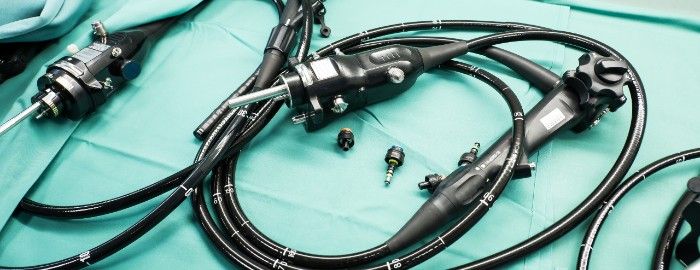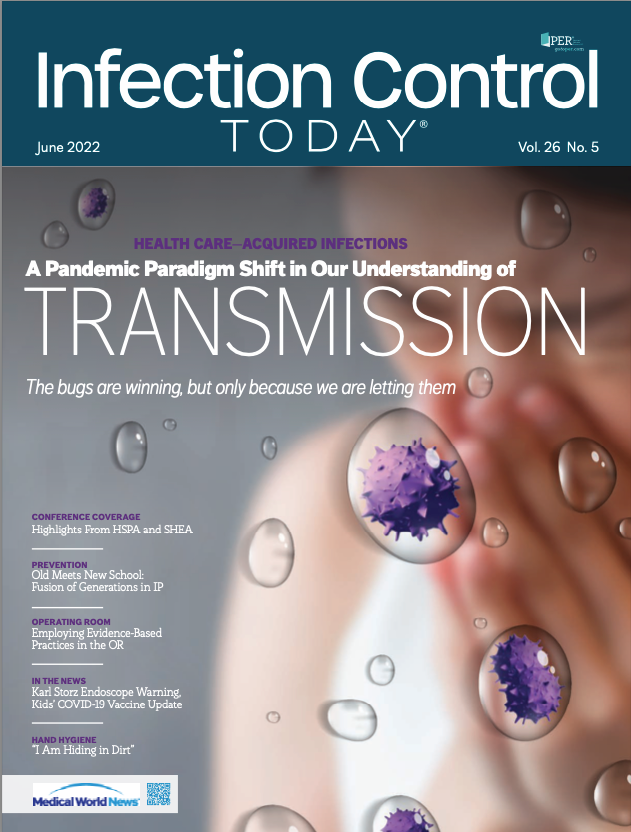Despite Safety Alerts, Contaminated Flexible Endoscopes Continue to Put Patients at Risk
From 2014 to 2021, continued FDA reports have shown multidrug-resistant bacteria contaminating 6 types of endoscopes have had fatal consequences.
(Adobe Stock)

Reprocessing practices may not always be sufficient to prevent flexible endoscopes from exposing patients to infectious organisms, including carbapenem-resistant Enterobacteriaceae (CRE), and other multidrug-resistant pathogens despite efforts and recent warnings to increase the safety and efficacy of reprocessing endoscopes, based on a new study’s findings. To improve sterilization efficacy, additional actions (eg, visual inspections) or supplemental measures (eg, sterilization) may be required.
Although health care workers reportedly cleaned and disinfected the endoscopes in compliance with manufacturer instructions, subsequent deaths were tied back to infection with CRE. Reprocessing is defined as pre-cleaning, leak-testing, and brushing the endoscope, followed by high-level disinfection or sterilization, and proper water-rinsing, drying, and storage.
“My analysis’ findings suggest that additional vigilance and enhanced reprocessing measures are integral to patient safety and preventing different types of flexible endoscopes from remaining contaminated and transmitting diseases,” investigator and author Lawrence F. Muscarella, PhD, of LFM Healthcare Solutions, LLC, told Infection Control Today® in an exclusive interview. “With the emergence of organisms resistant to multiple classes of antibiotics and antimicrobials—what we call today “superbugs”—along with an aging population who can benefit from treatments that involve use of a flexible endoscope but whose immune systems are less active, the game has changed, the runway shortened, and the risk of endoscope transmitting diseases is no longer academic but at times, fortunately still with low frequency, can be a matter of life and death.”
For the study, Muscarella analyzed 10,000 to 15,000 adverse event reports filed between 2014 and 2021 in the FDA’s Manufacturer and User Facility Device Experience [MAUDE] database linking infections of multidrug-resistant bacteria, or “superbugs,” to each of the 6 studied endoscope types. However, to date, the FDA has issued safety alerts discussing only the risk of “reprocessed” duodenoscopes and bronchoscopes transmitting multidrug-resistant organisms during an endoscopic procedure. The author identified reports specifically linking CRE infections not only to duodenoscopes, but also to the other 2 studied gastrointestinal (GI) endoscope types: gastroscopes and colonoscopes (as well as to bronchoscopes).
“Despite efforts during the past several years to improve the safety of duodenoscopes, I identified reports filed in 2021 linking reprocessed duodenoscopes featuring a fixed-endcap design to infections of CRE in 2 US facilities,” Muscarella told ICT®. “Similar reports involving the same endoscope design and the same organisms, ie, CRE, occurred in 2015, and even earlier, so these recent 2021 reports are kind of like a déjà vu moment. These 2 outbreaks would seem to confirm that the risk of duodenoscopes transmitting diseases remains a real issue and is not in our rear-view mirror yet.”
According to the reports analyzed, contamination was identified on 6 different types of reprocessed, “patient-ready” endoscopes during microbiological surveillance testing. These included GI endoscopes such as colonoscopes, duodenoscopes, and gastroscopes; bronchoscopes; ear-nose-throat (ENT) endoscopes, including tracheal intubation endoscopes; and urological endoscopes, including cystoscopes.
Muscarella’s results suggest that unless specific additional safety measures are adopted and executed, such as inspecting the device for contamination and for damage before reuse, among several other sometimes overlooked safety measures, current reprocessing practices may not always be sufficient to prevent a flexible endoscope from transmitting infections. However, infection preventionists face challenges and the cleanings should be tracked, as ICT® reported here and here.
Relevant adverse events satisfying the requirements of the study included reports describing contamination of the reprocessed endoscope with microorganisms, patient fluids and/or biofilms, the documented association between infection and patient exposure to a flexible endoscope, failure to clean or otherwise reprocess the endoscope correctly according to manufacturer instructions, and the use of a damaged, cracked or otherwise broken endoscope that could pose an infection risk.
Key study results that surprised Muscarella the most were “that the number of adverse event reports submitted to FDA last year [that], satisfying [my] analysis’ inclusion criteria, compared [with] the previous year (2020), increased for each of the 6 studied endoscope types—and most markedly for ENT endoscopes,” the investigator told ICT®. Finally, “the number of adverse event reports submitted to the FDA in 2021 satisfying [my] study’s inclusion criteria, compared with 7 years earlier in 2014, increased significantly for each of these 6 endoscope types, and with gastroscopes displaying the most pronounced increase.”
